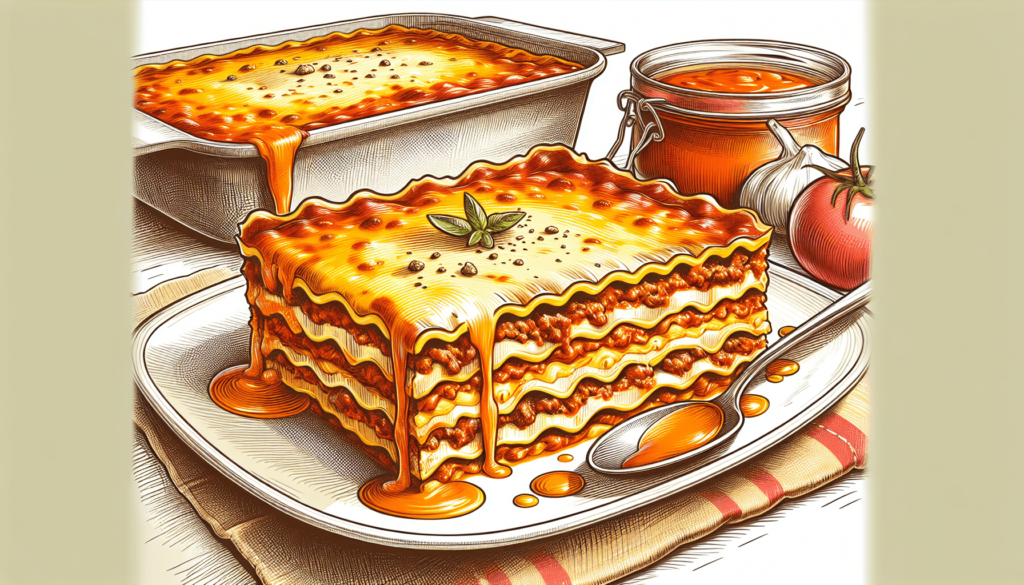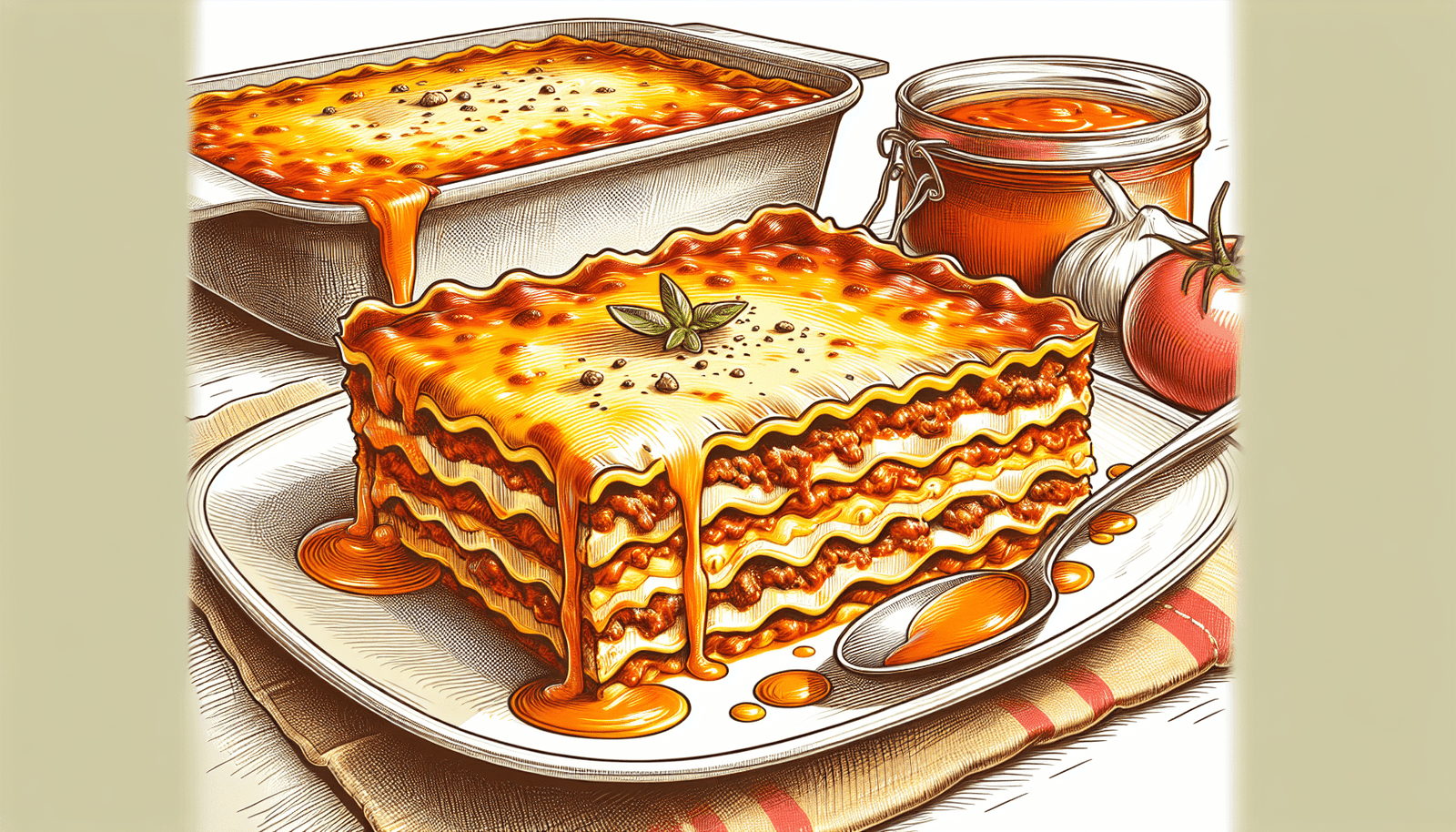Have you ever craved a meal that’s not only comforting but also perfect for sharing with loved ones? One dish that fits this bill is the timeless classic: lasagna. A multifunctional favorite that’s been treasured over time, lasagna is often sought for family gatherings and friendly meet-ups due to its rich layers and hearty flavors that bring warmth to any table.
Understanding the Allure of Lasagna
Lasagna isn’t just a dish; it’s a culinary journey through layers of flavor and texture. Originating from Italy, this beloved entrée has made its way into kitchens across the globe, taking on various adaptations while maintaining its classical essence. What makes lasagna so universally appealing is the combination of textures, from the silky layers of pasta to the gooey, melted cheese, hearty meat, and rich tomato sauce. Each bite offers a perfect harmony of ingredients that ensure a satisfying experience.
Key Ingredients for a Classic Lasagna
Let’s break down what goes into making a scrumptious lasagna:
Pasta Sheets
The backbone of any lasagna, pasta sheets are what hold everything together. Traditionally made from flour, eggs, and water, these sheets are rolled out thinly and are available in both store-bought and homemade varieties.
Meat Sauce
Typically made with ground beef or pork, the meat sauce adds a hearty component. Sautéed with onions, garlic, and herbs, it’s simmered in tomato paste or crushed tomatoes to give depth.
Cheese Mixture
A classic lasagna is incomplete without ricotta cheese, mozzarella, and Parmesan. The ricotta mixture often includes eggs for structure, while mozzarella provides the gooey texture, and Parmesan adds a sharp, nutty flavor.
Béchamel Sauce
In some traditional recipes, a béchamel sauce substitutes the cheese mixture or is used alongside it, creating layers of creamy goodness.
Herbs and Seasonings
Oregano, basil, salt, and black pepper bring out the flavors in the meat sauce. Fresh herbs can elevate the sauce, while a dash of nutmeg in the béchamel can add unexpected warmth.

Step-by-Step Guide to Crafting Lasagna
Creating a lasagna from scratch may seem daunting, but with the right steps, you’ll find it’s quite manageable. Gather all your ingredients, and get ready to embark on preparing your lasagna masterpiece.
Preparing the Meat Sauce
-
Sauté the Aromatics: Begin by heating oil in a pan. Add diced onions and minced garlic, cooking them until they’re translucent and fragrant.
-
Cook the Meat: Add the ground meat to the pan. Break it apart with a spoon and cook until browned.
-
Simmer with Tomatoes: Stir in tomato paste or crushed tomatoes, and let the mixture simmer. Add herbs, salt, and pepper, adjusting the seasoning to taste. Allow the sauce to reduce slightly to thicken.
Preparing the Cheese Mixture
-
Blend Ricotta Cheese: In a bowl, combine ricotta cheese with an egg, a pinch of salt, and pepper. Mix until smooth.
-
Add Grated Cheese: Stir in part of the grated mozzarella and Parmesan. Set aside the remaining cheese for layering.
Assembling the Lasagna
The secret to a well-layered lasagna is balance – ensuring each component has its presence in every bite.
-
Layer the Components: Start by spreading a thin layer of meat sauce at the bottom of your baking dish. Add a layer of pasta sheets, followed by more sauce, and a layer of the cheese mixture. Repeat this process, ensuring that each layer is even.
-
Top with Cheese: Finish with a layer of pasta sheets. Spread any remaining sauce on top and sprinkle generously with mozzarella and Parmesan.
-
Bake to Perfection: Cover with aluminum foil and bake in a preheated oven at 375°F (190°C) for about 25 minutes. Remove the foil and bake for an additional 15 minutes until the cheese is bubbly and golden brown.
Allowing to Set
Let the lasagna rest for at least 15 minutes after baking. This helps the layers set, making it easier to slice and serve.
Tips for the Best Lasagna
To ensure your lasagna is the talk of the table, here are some tips:
-
Pasta Perfection: If using store-bought pasta sheets, opt for those that don’t require pre-cooking. They’ll save you time and hassle.
-
Richness in Sauce: If your sauce seems too watery, allow it to simmer a bit longer. A thicker sauce contributes to better structure.
-
Cheese Variety: Feel free to add other cheeses such as provolone or gouda for a unique twist.
-
Herbs Galore: Fresh herbs can lift the flavors beautifully. Consider adding fresh basil leaves between layers for a burst of aroma and taste.
-
Patience is Key: Allow the lasagna to rest before slicing to prevent it from falling apart. Patience will reward you with perfect, neat squares.

Alternatives and Variations
Lasagna is a versatile dish that can be adapted to suit dietary preferences and ingredients at hand:
Vegetarian Lasagna
Swap the meat sauce for a mixture of sautéed vegetables such as mushrooms, zucchini, and spinach. Adding lentils or a plant-based meat substitute can enhance the heartiness.
Seafood Lasagna
Replace meat with seafood like shrimp and crab, paired with a white sauce instead of tomato-based for a coastal twist.
Gluten-Free Lasagna
Use gluten-free pasta sheets, which are now widely available, allowing those with gluten intolerance to enjoy this classic dish.
Vegan Lasagna
Opt for plant-based cheeses, and use tofu or cashew cream instead of ricotta. Lentils or mushrooms can take the place of meat, creating a satisfying vegan alternative.
Pairing Your Lasagna
Complement your lasagna with side dishes that enhance its flavors:
Salads
A fresh, crisp salad with a light vinaigrette helps balance the rich flavors of lasagna. Consider a classic Caesar or a simple mix of arugula with lemon dressing.
Garlic Bread
The buttery, garlicky goodness of garlic bread is perfect for mopping up lingering sauces on your plate.
Wines
A robust red wine like Chianti or Merlot pairs excellently with red sauce-based lasagna, while a white lasagna might benefit from a crisp Chardonnay.
Historical Tidbits
Lasagna has a rich history dating back to Ancient Greece and Rome, believed to have evolved from layered pasta dishes from these early civilizations. The name “lasagna” is derived from the Greek word “Laganon,” referring to the flat sheets of pasta associated with the dish.
Embracing the Lasagna Making Experience
Making lasagna can be much more than a process of following a recipe; it can be a creative expression that varies from kitchen to kitchen and cook to cook. Whether crafting it for a family gathering or exploring it as a new cooking adventure, lasagna invites you to build, savor, and share. Each layer tells a story of tradition, warmth, and the joy of hearty cooking. Engage with the process, and you’re likely to find that creating this classic lasagna is as delightful as tasting it. So, gather your ingredients, roll up your sleeves, and embark on crafting a lasagna that will become your signature dish, bringing warmth and satisfaction with every bite.
Some of the links on this site are affiliate links, which means I may earn a small commission if you click on them and make a purchase, at no additional cost to you. As an Amazon Associate, I earn from qualifying purchases.



